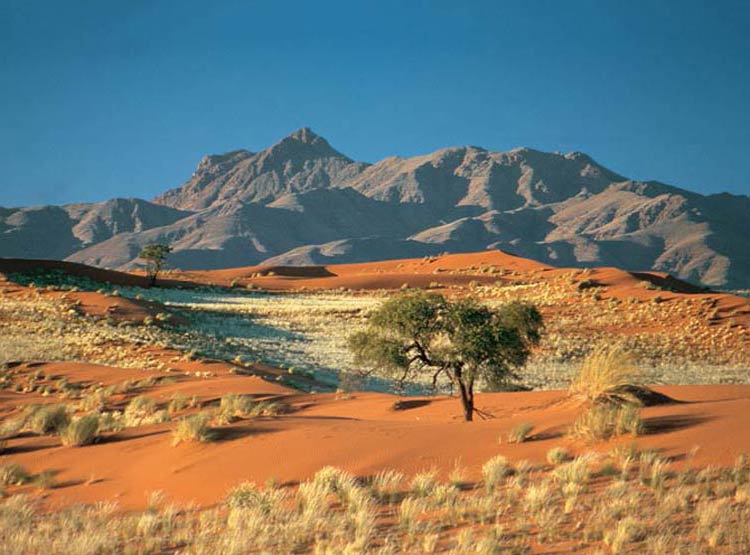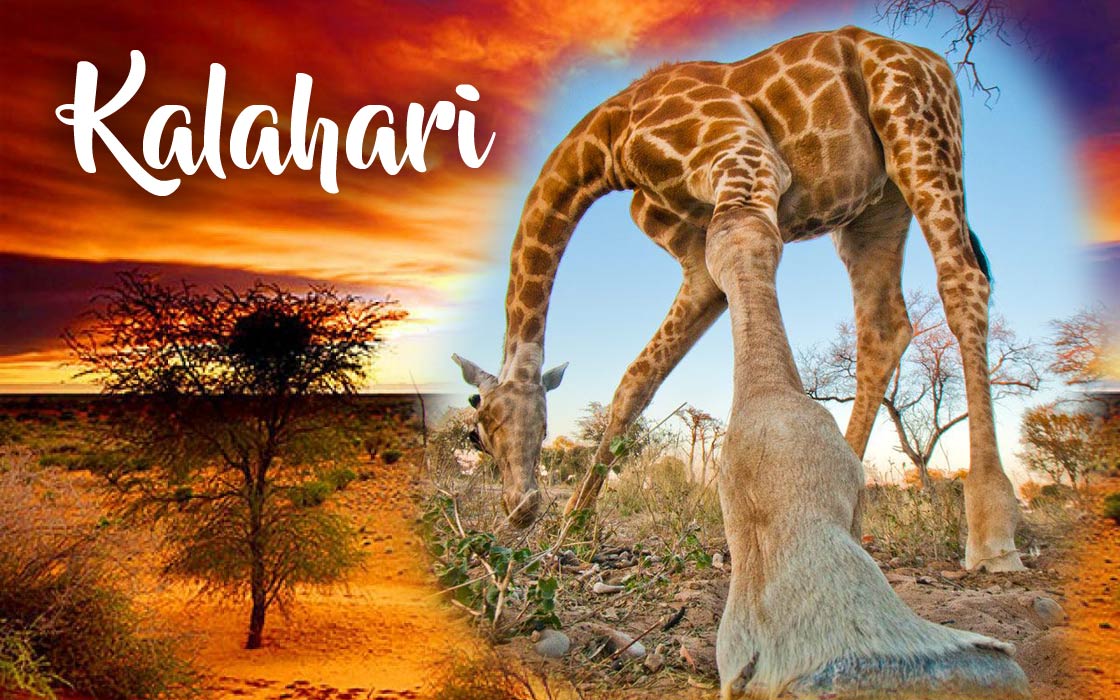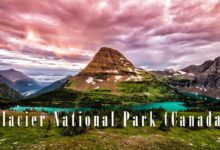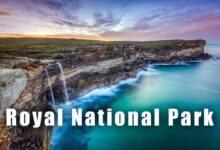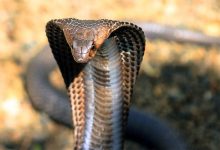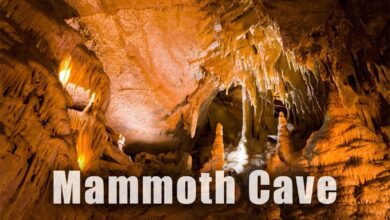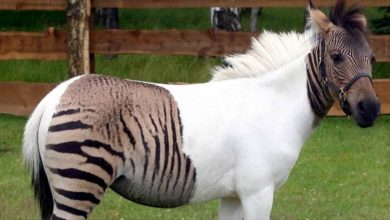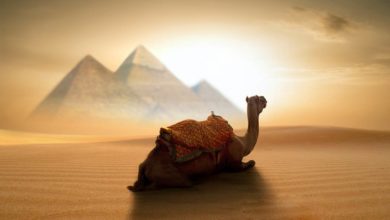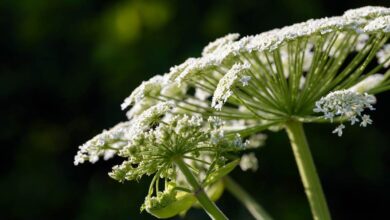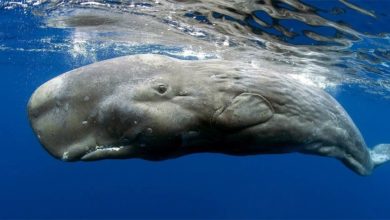Kalahari – An Extraordinary Land
Is Kalahari a desert, a basin, or a savanna?
In reality, it is a bit of one, a bit of another, and even a third. How so? Well, the Kalahari Desert lies within the territory of the Kalahari Basin, which is much larger than the desert itself. Additionally, the Kalahari is primarily a desert in name only. Why? In fact, it is a vast, sandy savanna with a semi-desert character.
Although rain falls here sporadically and is not abundant, when water does pour from the sky, the entire area transforms beyond recognition: temporary rivers appear, and rich life, full of plants and many animal species, returns to the dry and withered lands.
It can therefore be stated that thKalahari has two faces – a desert one and a green one, much more similar to a savanna. Formally, as many as three parts are distinguished within its area: the desert, the semi-desert, and the savanna itself. At its northernmost edges, one can even find normal forests. The Kalahari is truly an extraordinary land that attracts lovers of desert solitude as well as thrilling safaris.
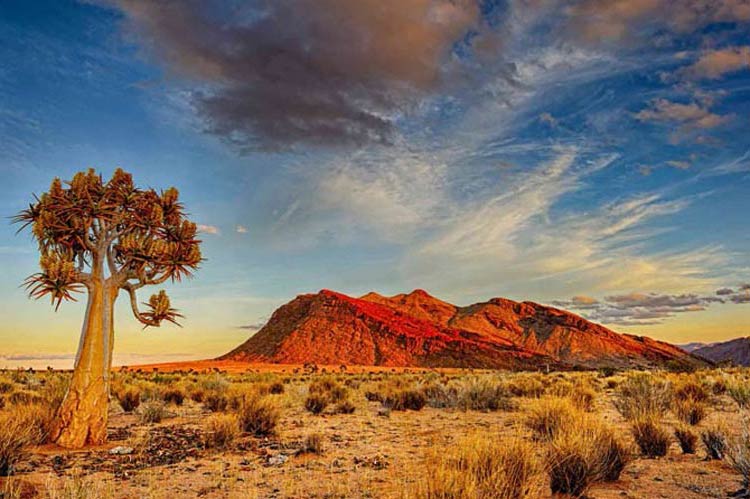
Kalahari Basin
The Kalahari in a broad sense is a vast basin that extends over the territory of Botswana, as well as countries such as South Africa, Namibia, and even Angola, Zambia, and Zimbabwe. A basin is a geological landform characterized by a depression in the terrain. Since it is concave, the surrounding area is higher – the basin is surrounded by elevations on all sides. Such formations almost always arise as a result of orogenic movements or erosion.
Kalahari Basin is surrounded by the South African Highlands, forming an entire belt. The Paleozoic bedrock is covered by layers of Tertiary sediments, primarily sands and sandstones. In the southern part, dunes and sandy ridges can be observed, while swamps occur in the north.
The climate here is tropical continental, decidedly dry, only slightly more humid in the east. Rivers are mostly seasonal, appearing when the rains come. At that time, savanna vegetation flourishes in these areas; in the north, sizable acacias (Acacia) and even baobabs (Adansonia) grow, and deciduous forests appear in the northernmost reaches. However, the south remains the driest, and only semi-desert vegetation can survive here. The surface area of the entire basin (sometimes also called a depression) covers a vast area of over 2.5 million km2 (965,255 square miles).
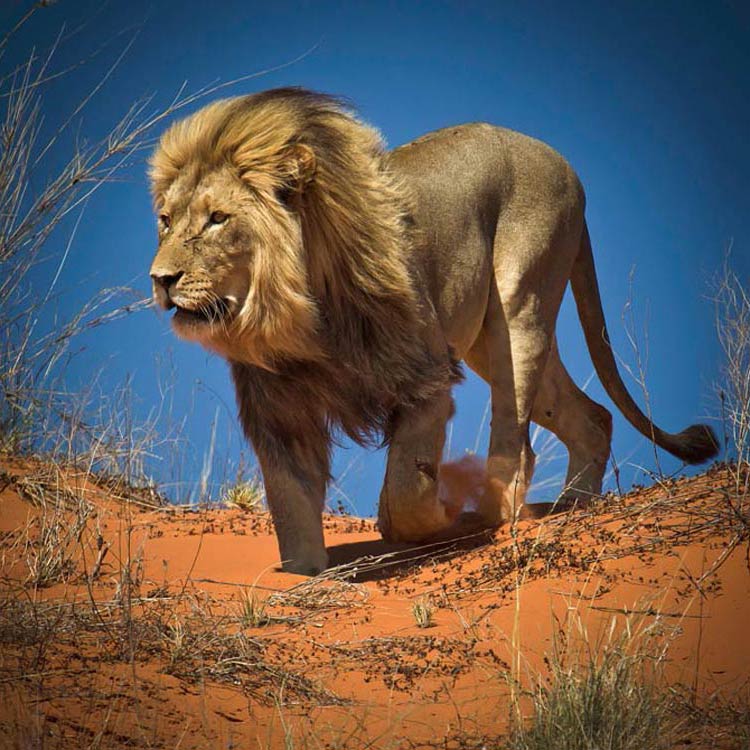
The Kalahari Desert is part of the Kalahari Basin.
A Place Without Water
The Kalahari Desert is located primarily in Botswana, but not exclusively, as its fragments lie within the borders of Namibia and South Africa. The desert itself is as old as the African continent and originated 55 million years ago. It covers an area of almost one million square kilometers and is one of the more diverse deserts.
In local languages, the name Kalahari means a place without water, a land full of stones and sand, or deadly thirst. This quite accurately describes both the climate prevailing in these areas and the appearance of the desert itself, especially in the southern part, which even during the rainy season has a semi-desert character. In contrast, in the north, vegetation flourishes like in a savanna, and in some areas, grapevines and citrus fruits are cultivated.
The climate in the Kalahari is quite deadly. As in most deserts, there are huge temperature fluctuations during the day and throughout the year. In summer, it can reach up to 40°C (104°F), while in winter, the climate changes to cool and dry, and temperatures drop below 0°C (32 °F). This is also due to the relatively high elevation of the terrain (even above 1000 meters (3,281 feet) above sea level). These are definitely not good living conditions.
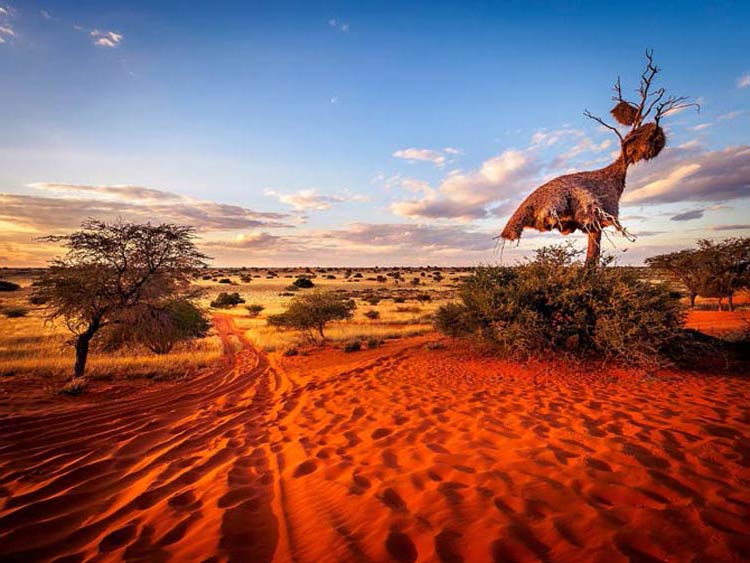
The Kalahari Desert has only one permanent river that flows here throughout the year – it is called the Okavango. It flows in the northwest and, instead of flowing into the sea, ends its course in the Kalahari Basin, where it empties into a swampy reservoir of the same name. The swamps are a habitat for many species of plants and animals.
During the rainy season (which is from October to April), with the arrival of water, temporary rivers, sometimes called ephemeral rivers, also appear. It is thanks to them that vegetation can develop. The Kalahari also has its small lake (Ngami), which is partially supplied with water from the Okavango River delta. Annual rainfall in the Kalahari usually exceeds 70 millimeters (2.76 inches), but does not exceed 190 millimeters (7.48 inches). Most of the water soaks into the ground immediately. In terms of water supply, the Kalahari does not differ from a desert, and that is why it is called one.
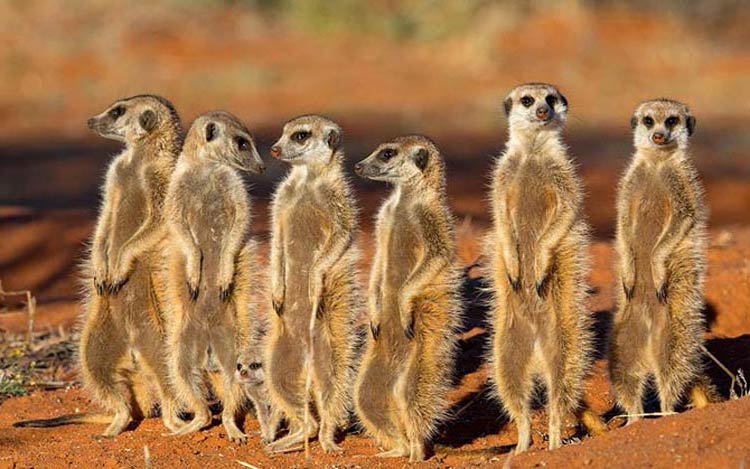
Population, Plants, and Animals
Despite these inhospitable terrains, rich biological life flourishes, especially in the northern Kalahari, where the climate is significantly milder and rainfall more abundant. Several tribes permanently inhabit the Kalahari Desert itself, including the oldest, the San Bushmen tribe.
Their groups were once much larger, but this was many thousands of years ago. The San Bushmen form one of the oldest cultures in the world and have managed to survive in the desert for 20,000 years. They have survived to this day and still live as their ancestors did: they are a hunter-gatherer community. They can draw water from the roots of some plants or… from melons, a special variety of which grows above underground rivers. They are masters of survival.
In the Kalahari, we can find over 400 plant species. Vegetative success is due to the fact that the sands in these areas retain water better than most desert soils, so vegetation has a source from which to draw life-giving fluid. In the southern areas, where the heat is greatest, we mainly find grasses, semi-desert shrubs, and solitary acacias (Acacia).
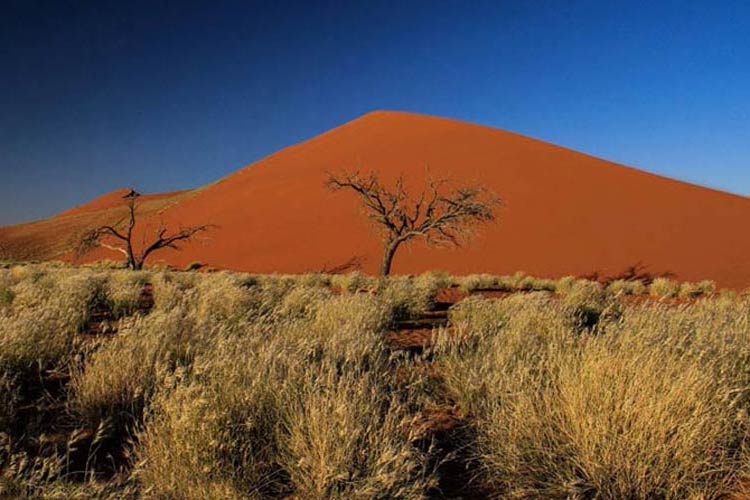
In contrast, in the northern and especially northwestern parts of the desert, deciduous forests grow. We will also find acacias (Acacia) and baobabs (Adansonia) here. The greenest areas of the Kalahari are the regions of the Orange River, where grapevines, citrus fruits, and mangoes are cultivated.
The animals living in the Kalahari Desert can survive despite the enormous heat and lack of water. They are well adapted to this. The most popular creature in these areas is the gemsbok – an oryx antelope (Oryx gazella) (which does not need to drink; it obtains water solely from its food).
The Kalahari is also an area where wild cats occur: lions (Panthera leo), leopards (Panthera pardus), caracals (Caracal caracal), and cheetahs (Acinonyx jubatus). We will also encounter sizable groups of meerkats (Suricata suricatta) and pangolins (which are similar to armadillos). During the rainy season, frogs can also be seen. The Kalahari Basin also has many migratory species. Among them are elephants (Loxodonta africana) and various antelopes.
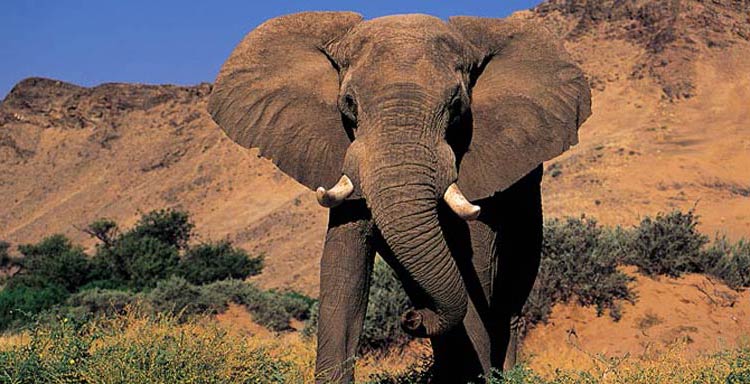
National Parks and Reserves
Many national parks and reserves have been established in the Kalahari Desert area to protect its unique beauty. Here you will find Khutse National Park, Kgalagadi Transfrontier Park, and the Central Kalahari Game Reserve, as well as Chobe National Park and Nxai Pan National Park.
Kgalagadi Transfrontier Park
The Kgalagadi Transfrontier Park has an area exceeding 37,000 km2 (14,286 square miles) and extends across the territories of South Africa and Botswana. It was formed by the merging of the Gemsbok National Parks in both countries in 1999 (hence the term “transfrontier”).
The park is located in the southern part of the desert, and its characteristic element and main attraction are the reddish-colored dunes that run parallel to each other, ridge after ridge. In summer, deadly heat prevails here, so it is better to visit during the cooler months when the temperature does not reach a deadly 45 °C (113 °F).
Within the park, we can admire acacia bushveld, and among the animals, various species of antelopes, wild cats, meerkats, and hyenas. We will also see many birds of prey here, including the tawny eagle (Aquila rapax).
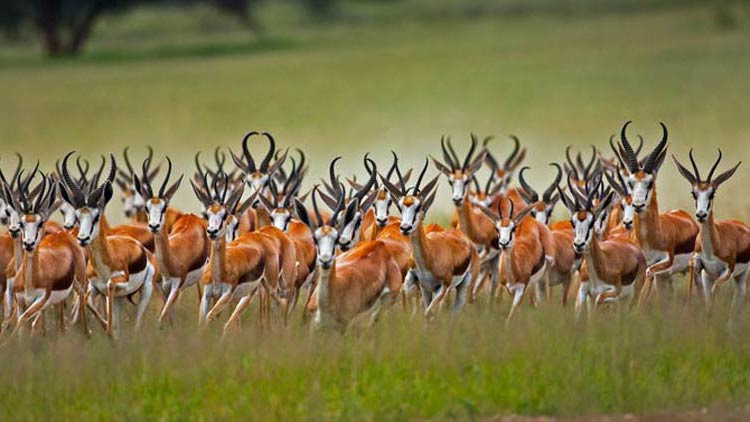
Central Kalahari Game Reserve
The Central Kalahari Game Reserve (CKGR for short) is a dream destination for a wild safari. The park covers over 50,000 square kilometers (19,305 square miles), and only its fragments – mainly in the north – are open to tourists.
The region is still not very popular, so if you want to feel like the first explorers, this is the perfect place. You can choose one of several permanent camps or opt for a mobile safari, which will give you the opportunity to see more attractions.
In private reserves, you can also choose the option of walking tours or night safaris. Remember that regulations apply. We have the opportunity to admire many antelopes, giraffes (Giraffa camelopardalis), wild cats (lions are the most common), and in the central Kalahari, ostriches (Struthio camelus) and hawks (Accipitridae) also await us, as well as hyenas (Hyaenidae) and foxes.
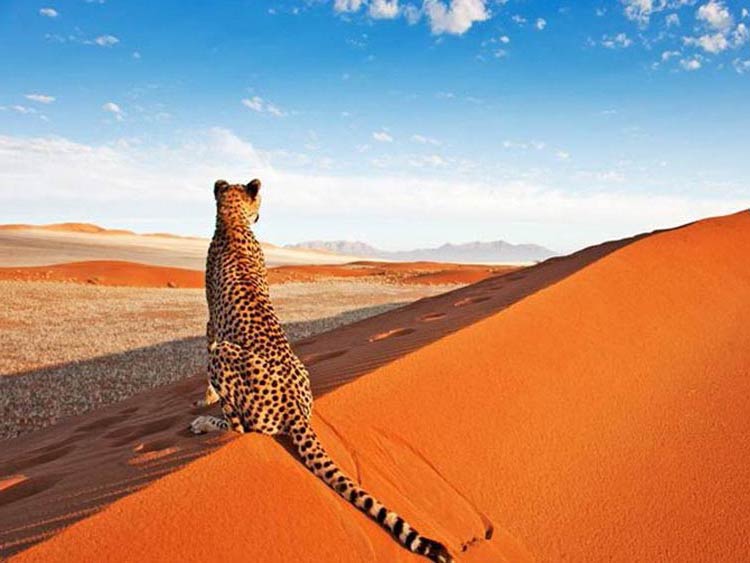
Detailed Data
Kalahari Desert in Numbers
- Area: 900,000 km² (347,492 square miles)
- Length: 4,000 km (2,485 miles)
- Countries: Botswana, Namibia, South Africa
- River: Orange River
- Kalahari originated 55 million years ago
- Summer temperatures exceed 40°C (104°F), winter temperatures drop below 0°C (32°F)
- Rainfall in Kalahari ranges from 70-190 mm (2.76-7.48 inches)
- Over 400 plant species can be found in the Kalahari
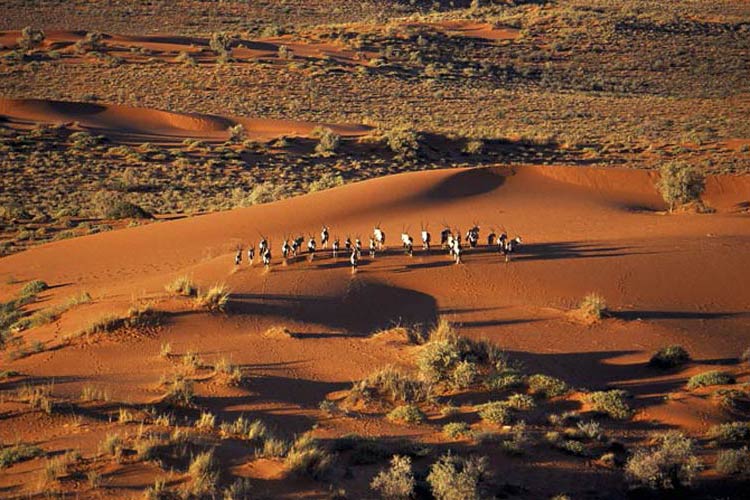
Kalahari Desert – Interesting Facts
- In the Kalahari, we can find traces of ancient river systems. These very old, dry riverbeds are called Omuramba, and when the rainy season comes, they serve as retention reservoirs.
- In the desert, extensive areas can be found that are ideal for cattle grazing. Many animals, both wild and domesticated, live here.
- The oryx is an antelope that copes perfectly with extremely harsh desert conditions. Not only is it able to obtain water solely from its food (i.e., not drink), but it also has exceptional kidney function. Long periods of drought are not a threat to it!
